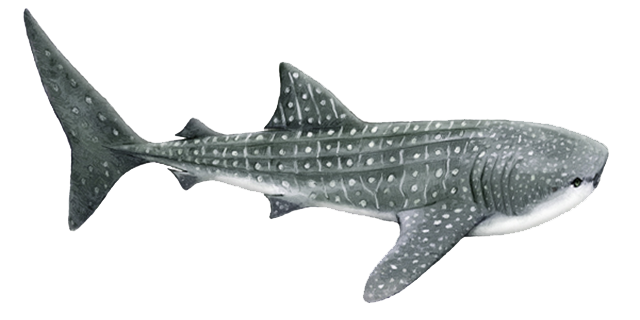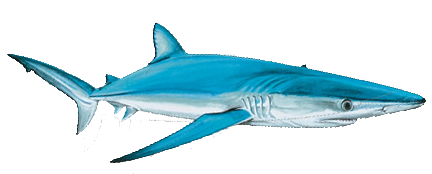 |
Bull Shark |
Carcharhinus leucas |
Maximum length of 11.5 feet |
Pale to dark gray above fading to a pale or white underside |
Fish and small sharks |
Marine and freshwater shallow habitats |
Worldwide |
 |
Leopard Shark |
Triakis semifasciata |
Maximum length of 7 feet |
Silver to bronzy gray with dark saddles and spots, lighter underside |
Small fish, crabs, shrimp, worms, and fish eggs |
Marine, sandy and muddy bays in shallow water less than 20 feet (6 meters) in depth |
Eastern Pacific Ocean from Oregon to the Gulf of California |
 |
Whale Shark |
Rhincodon typus |
Maximum length of 60 feet — largest living fish |
Greyish, bluish or brownish above with an upper surface pattern of creamy white spots between pale, vertical and horizontal stripes, the underside is white |
Plankton (microscopic plants and animals) and small schooling fish |
Marine, open oceans |
Marine, open oceans |
 |
Blue Shark |
Prionace glauca |
Maximum length of 13 feet |
They range in color from a light blue to a deeper shade of it. They may have several shades of blue on their bodies with he darkest colors on the top |
Squid, bony fish, smaller sharks, sea birds, shrimp, and lobster |
Most widely distributed animal on the entire planet (everywhere except polar regions) |
Marine, open oceans |
 |
Broadnose 7 Gill Shark |
Notorynchys cepedianus |
Maximum length of 10 feet |
Silver-grey or brownish upperparts and paler underparts. Adults also have small black and white speckles on the body and fins |
Many kinds of bony fish, dolphins, seals, other sharks, rays, and dead matter |
The broadnose sevengill is a coastal shark. It usually stays in water less than 50 ft deep, in bays and estuaries. However, it also occurs in deeper waters on continental shelves |
Temperate regions of the world's oceans |





